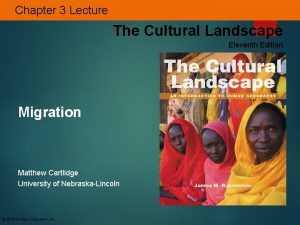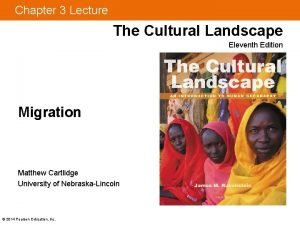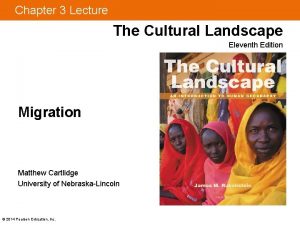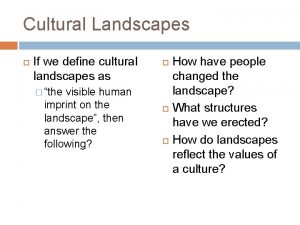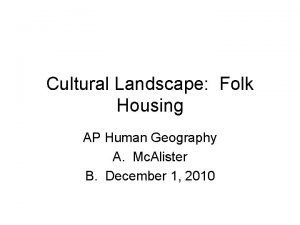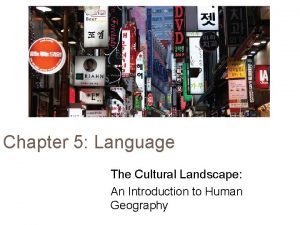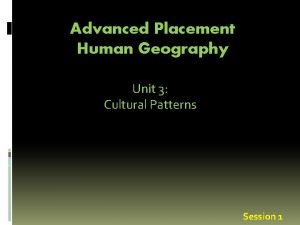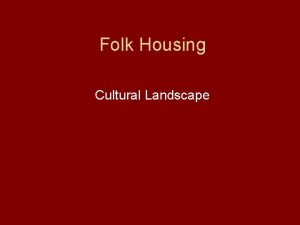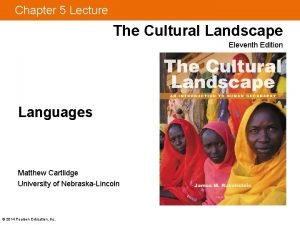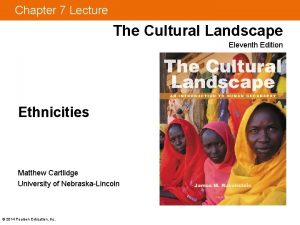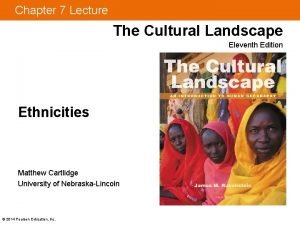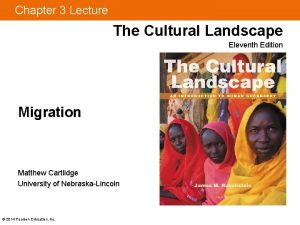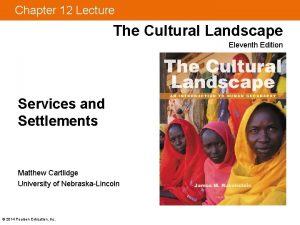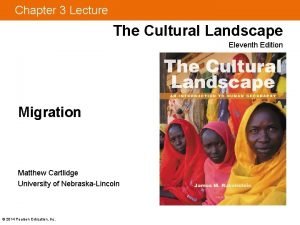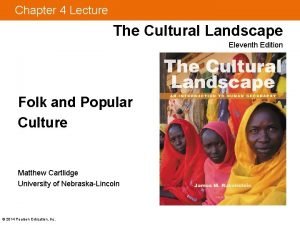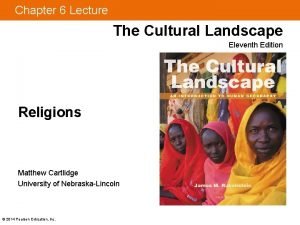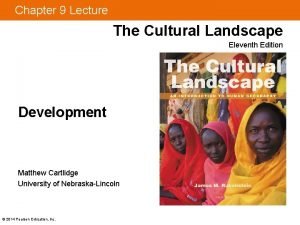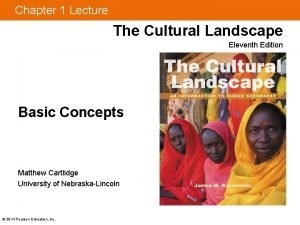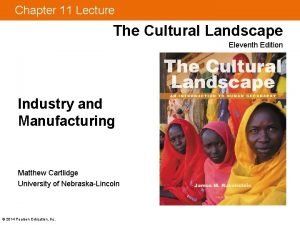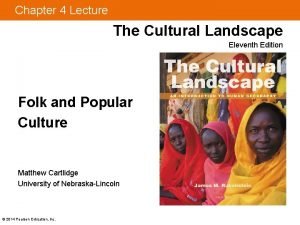Chapter 3 Lecture The Cultural Landscape Eleventh Edition
















- Slides: 16

Chapter 3 Lecture The Cultural Landscape Eleventh Edition Migration Matthew Cartlidge University of Nebraska-Lincoln © 2014 Pearson Education, Inc.

Key Issues • • Where are migrants distributed? Where do people migrate within a country? Why do people migrate? Why do migrants face obstacles? © 2014 Pearson Education, Inc.

Learning Outcomes • 3. 2. 1: Describe the history of interregional migration in the United States. • 3. 2. 2: Describe interregional migration in Russia and Canada. • 3. 2. 3: Describe interregional migration in Canada, China, and Brazil. © 2014 Pearson Education, Inc.

Learning Outcomes • 3. 2. 4: Explain differences among the three forms of intraregional migration. © 2014 Pearson Education, Inc.

Where Do People Migrate within a Country? • Interregional Migration – Perceived economic betterment typically compels individuals to make interregional migrations. • Historically- enticement of abundant available land on the American Frontier. • Presently- most jobs, especially in services, are clustered in urban areas. – Westward expansion contributed to a shift in the center of population. • “Center of population gravity” © 2014 Pearson Education, Inc.

© 2014 Pearson Education, Inc.

© 2014 Pearson Education, Inc.

Migration between Regions in Large Countries • World’s five largest countries in land area are Russia, Canada, China, the U. S. , and Brazil. – Russia: Interregional migration was encouraged eastward and northward by the government’s decision to locate new factories and to offer economic incentives away from existing population concentrations. © 2014 Pearson Education, Inc.

© 2014 Pearson Education, Inc.

Migration between Regions in Large Countries – Canada: Shares a similar east to west interregional migration pattern with the U. S. Three westernmost provinces are destinations for interregional migrants. – China: Nearly 100 million people have emigrated from rural interior to large urban areas along east coast where manufacturing is prevalent. – Brazil: Government moved its capital from Rio De Janeiro to Brasília (600 miles from Atlantic Coast) to encourage migration of Atlantic coast residents to move to the interior. © 2014 Pearson Education, Inc.

© 2014 Pearson Education, Inc.

Intraregional Migration • Since Industrial Revolution began in Europe in nineteenth century, a global trend for individuals to migrate from rural to urban areas – Percentage of urbanized population in U. S. • 1800: 5 percent • 1920: 50 percent • 2010: 80 percent – Motivated by economic advancement © 2014 Pearson Education, Inc.

Intraregional Migration • Most intraregional migration in developed countries is from cities out to surrounding suburbs. – Motivated not by economic advancement but by a desired lifestyle • Additional privacy associated with single-family detached houses • Garages and driveways offer parking at no additional fee • Often superior suburban schools © 2014 Pearson Education, Inc.

© 2014 Pearson Education, Inc.

Intraregional Migration • Developed countries experienced a new migration trend during the late twentieth century when rural areas were characterized by net in-migration. – Net migration from urban to rural areas is called counterurbanization. • Counterurbanization most prevalent in places rich with natural amenities – Rocky Mountain States (Colorado, Idaho, Utah, and Wyoming) © 2014 Pearson Education, Inc.

© 2014 Pearson Education, Inc.
 Management eleventh edition stephen p robbins
Management eleventh edition stephen p robbins Management eleventh edition
Management eleventh edition Management eleventh edition
Management eleventh edition Management eleventh edition stephen p robbins
Management eleventh edition stephen p robbins The cultural landscape chapter 3
The cultural landscape chapter 3 The cultural landscape chapter 3
The cultural landscape chapter 3 The cultural landscape chapter 3
The cultural landscape chapter 3 Eleventh 5 year plan
Eleventh 5 year plan Eleventh 5 year plan
Eleventh 5 year plan Eleventh plan
Eleventh plan For his eleventh birthday elvis presley
For his eleventh birthday elvis presley Cultural landscape convergence
Cultural landscape convergence What is the meaning of cultural landscape
What is the meaning of cultural landscape Ap human geography the cultural landscape
Ap human geography the cultural landscape Language
Language Artifact example ap human geography
Artifact example ap human geography Folk cultural landscape
Folk cultural landscape




